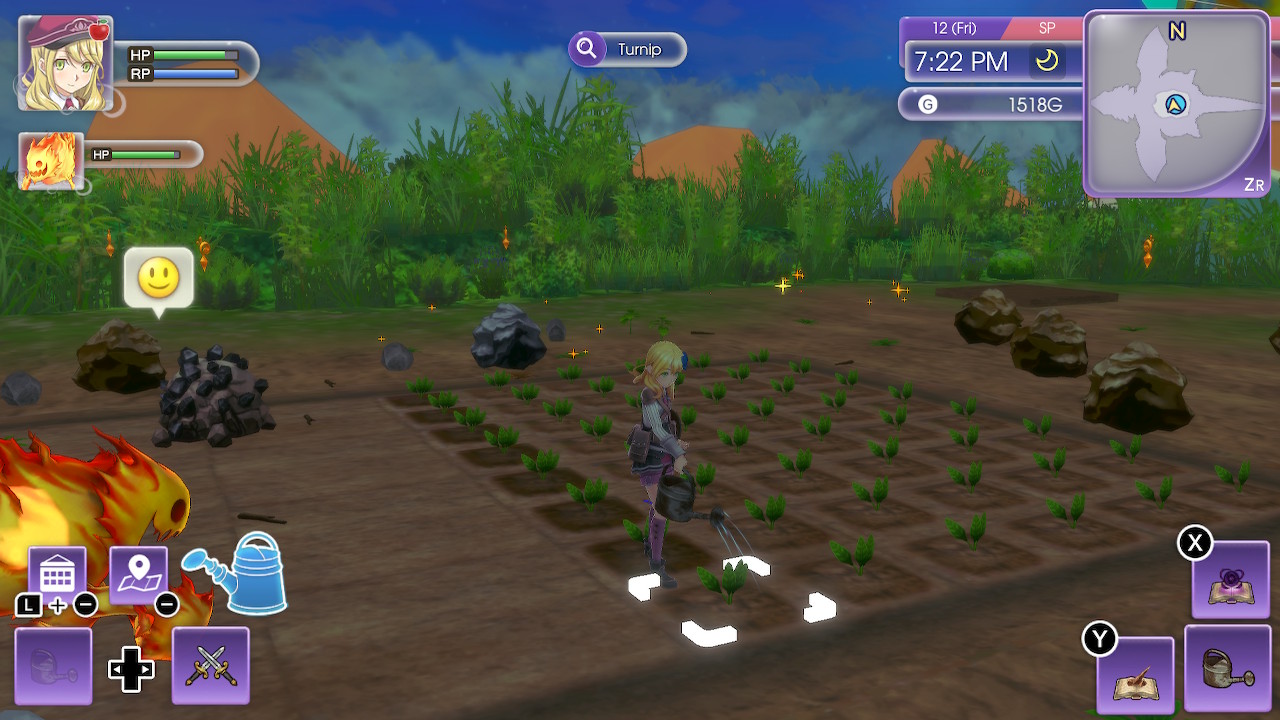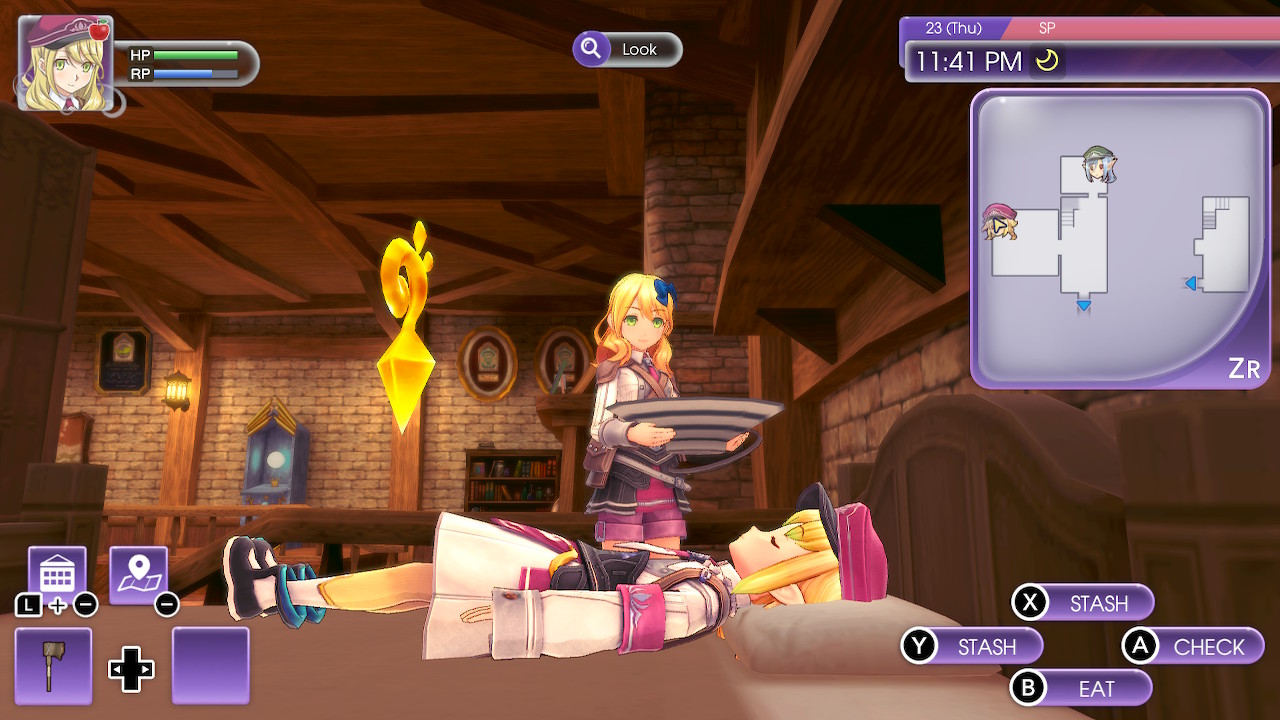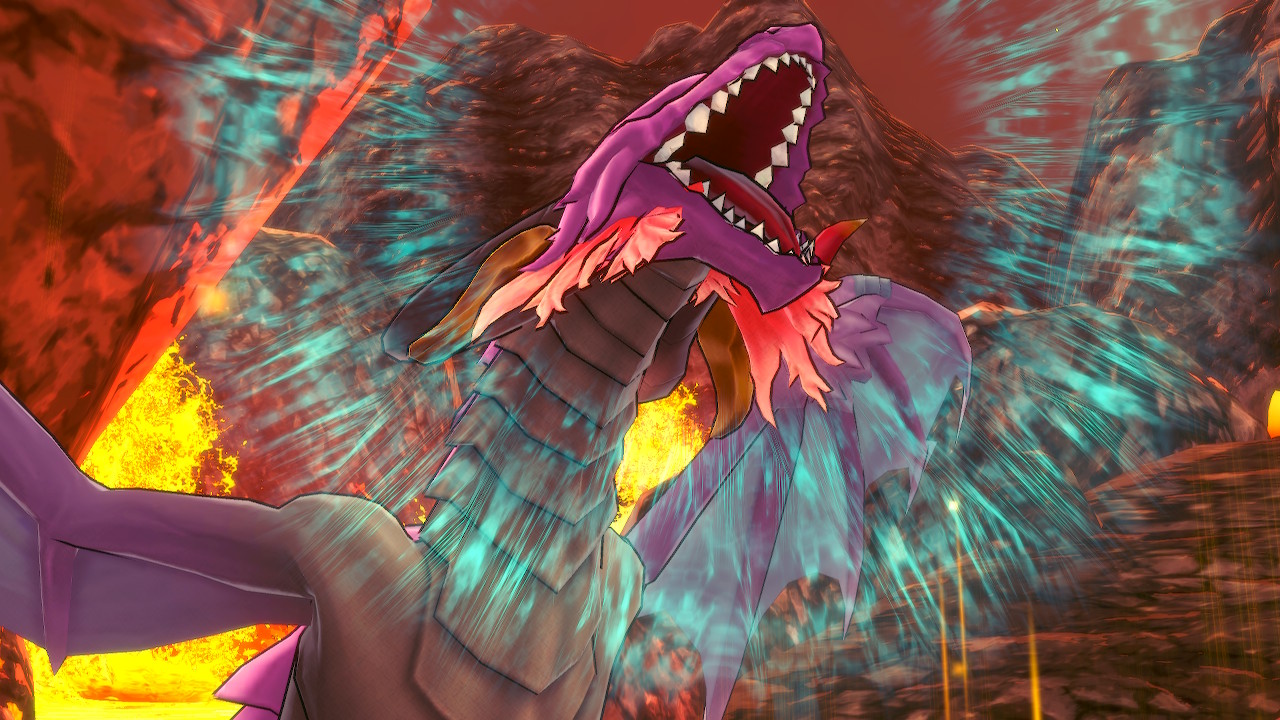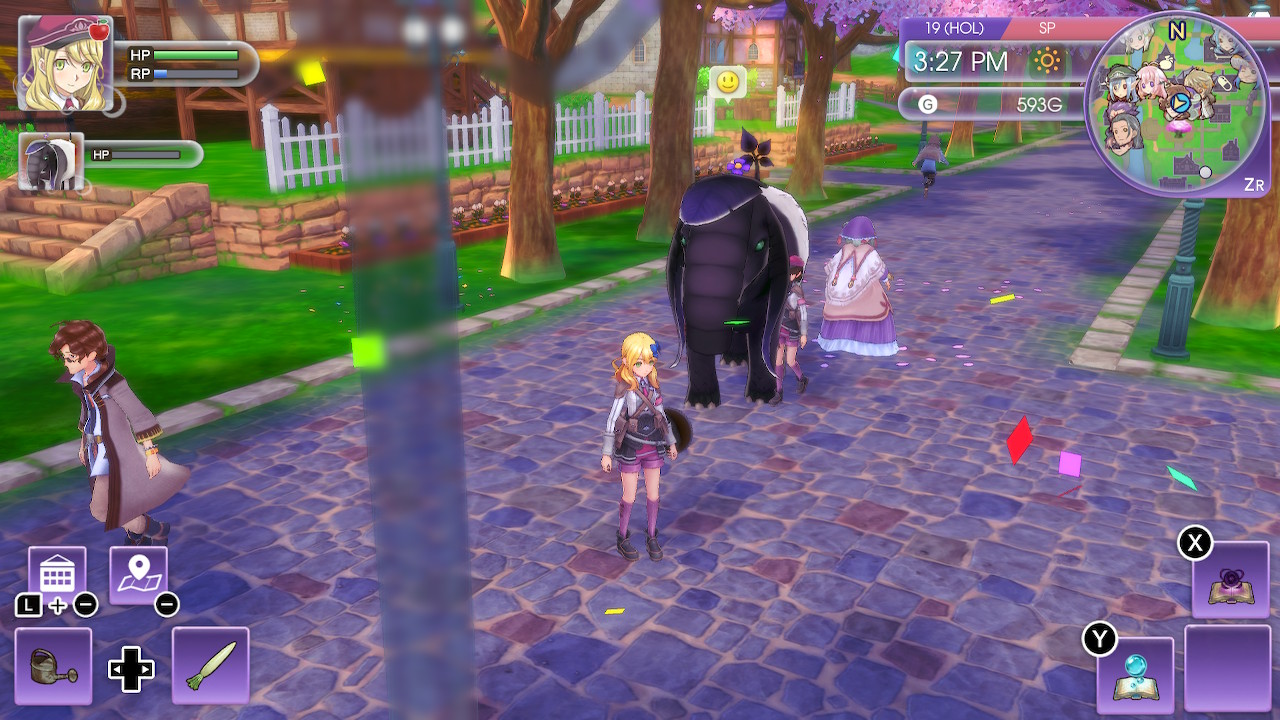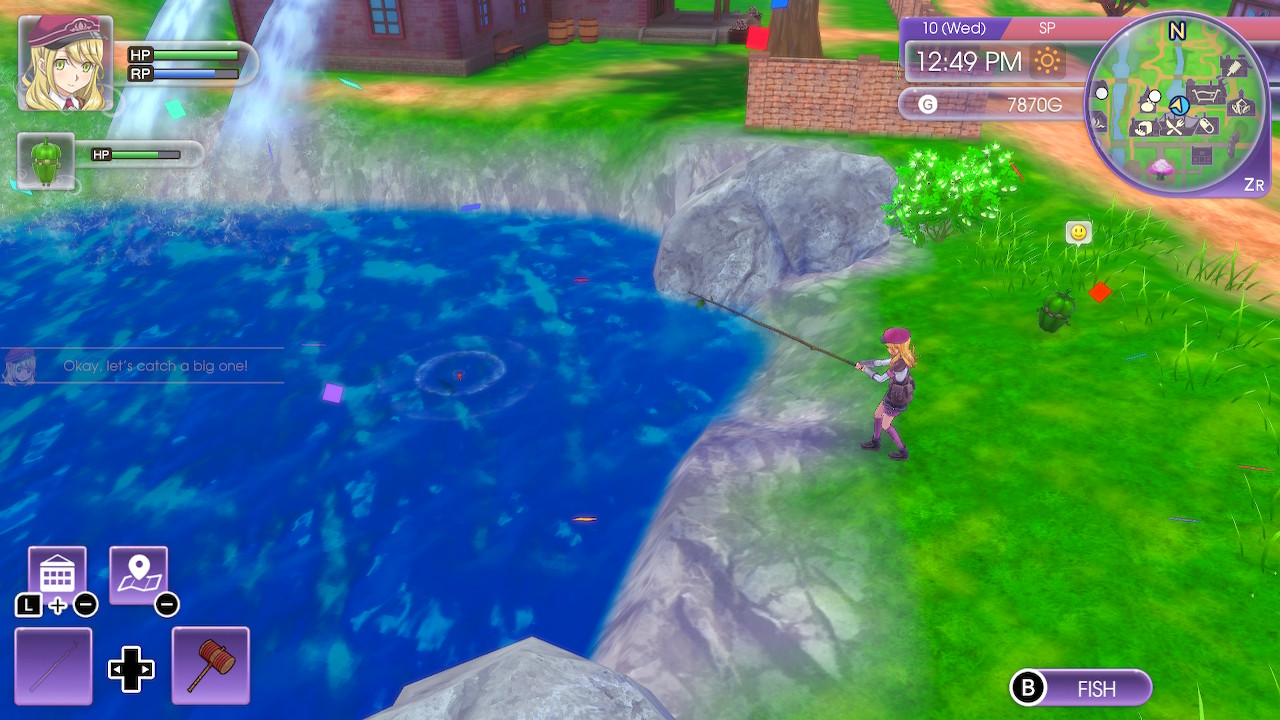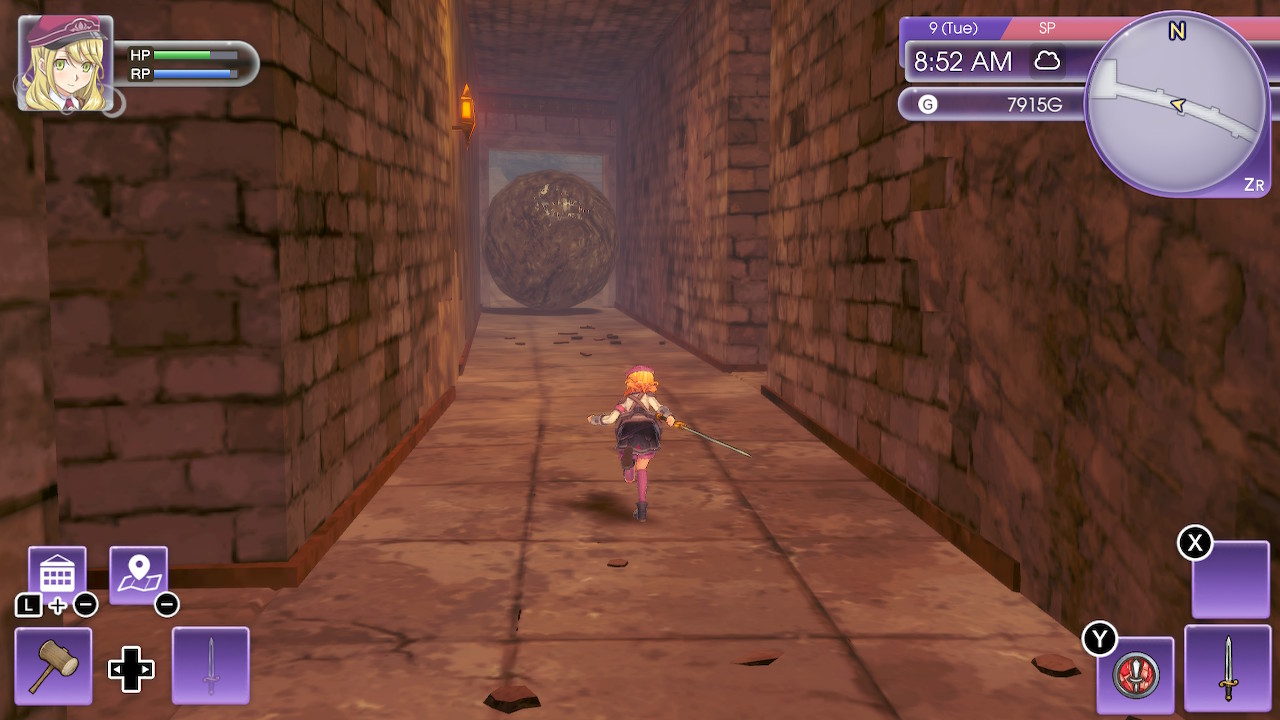Laptop Mag Verdict
Rune Factory 5 is a nostalgic entry in the farming RPG genre, but doesn’t execute on its promise. Long-time fans may find comfort where newcomers find frustration in the game’s design.
Pros
- +
Comforting handheld design
- +
The farming, fishing, combat loop is enjoyable
- +
Massive game length possibility after main story
- +
Combat is decent
Cons
- -
Music is torturously repetitive
- -
Most characters fall flat
- -
The game’s systems don’t reveal themselves until after 30-40 hours
- -
Poor performance while mounted for TV
Why you can trust Laptop Mag
With the death of the PlayStation Vita, and Nintendo’s convergence of handheld and console into the Nintendo Switch, handheld game design was largely lost. Games that once lived on handheld systems still persist, like Animal Crossing and Pokemon, but with the move onto a system with console-level hardware, they have adapted to become console-like experiences that can move on the go. The fidelity, design, and contexts which these games fit into our lives have changed.
Rune Factory 5 is still holding onto the nostalgia of handheld games. It clings to low fidelity and doesn’t create a world that feels ever expansive. It is built for popping open at a moment's notice to do a couple chores or talk to my favorite character. Rune Factory 5 is made for my pocket in a time where games are made for the couch, and provides me with a glimpse of my fond handheld gaming memories.
Unfortunately, Rune Factory 5 doesn’t create a memorable experience to make that nostalgic dream meaningful. For the first few moments, I was enamored by a game in the present that featured ideals of the past. Yet as time went on, I realized it wasn’t Rune Factory 5 I loved but the dream it presented to me. A dream presented through a nostalgic vessel of the past, lying hollow within. Sadly, there are better titles to be found on our best Nintendo Switch games page.
The handheld dream
Playing Rune Factory 5 feels like I am in a dream where handheld gaming is still all the rage. A time where games were built for handheld and scaled with that fact in mind, unlike the Nintendo Switch or present-day mobile games. It’s a time of the character taking up half the screen, menus not attempting to make sense, but embracing the absurdity of their video game contexts.
These games left room to imagine the characters and its world because they weren’t attempting to fully render them. Due to the limitation of how much these systems could do at one time, there wasn’t an aim to create worlds that animated or displayed every detail. There wasn’t a push to create worlds that were drastically changed by the consequences of play unless a player pushed the limits of their game. Rather, these games had to find alternative means to express themselves.
This didn’t limit the number of games that were created, but rather adjusted the context. You could take these games to bed, on road trips, or to a waiting room. Handheld titles were always built on a fairly smaller scale, but developers found ways to expand the amount of time spent with them. I’m talking about not only the way these games looked or were designed but the time in our lives that they were a part of.
Lying in bed at night and wandering around town to find what villagers are awake at 2 a.m. in Animal Crossing Wild World was an experience you didn’t really have on a console because console games weren’t designed to be turned on for a few minutes at a time to check in. A level of Super Mario 3D Land could be run through during a work break or on transit because they were small and snappy.
Sign up to receive The Snapshot, a free special dispatch from Laptop Mag, in your inbox.
With the Nintendo Switch becoming the primary handheld on the market, it changed the expectations of how we play. Rather than the handheld games we played in the past that were designed for the different context of life, handheld games are now console experiences we take on the go. These are games that were designed for long sit downs on the couch, but now these larger, long-term experiences can be put on suspend and taken anywhere.
However, Rune Factory 5 doesn’t recognize that we have entered this changed handheld era. Rune Factory 5 isn’t trying to bring the series to a new standard, unlike its previous console entries Frontier and Tides of Destiny. All of your actions are still incredibly awkward and dense, and the UI doesn’t feel like it belongs on a TV. There is no streamlining here, no new systems to get rid of the previous density, and there isn’t a grandiose scale the game achieves. This is simply another handheld Rune Factory.
It’s a game designed to be awkward, slow, small, and methodical. Spending a day in Rune Factory means spending time in a town that feels like home. Go to the shop to buy some bread and the shopkeeper knows you, maybe even wants to talk about the going ons around the town. All of the characters walk around in cycles that don’t feel different to the ways characters walk around PS2 Harvest Moon games. Items and equipment don't just cleanly swap in your pocket, you have to awkwardly hold them over your head while you choose which one goes in your pocket and which to equip.
It doesn’t even feel like it was built to be played on a TV as it technically performs worse when mounted. While playing on handheld, the game hovers at a normal 30 frames per second but frames drop to almost 15 fps at times while mounted. Rune Factory 5 was built for a nostalgic comfort of the past.
The Rune Factory 5 reality
What’s unfortunate is that the dream I had for Rune Factory 5 isn’t the reality it presents. Rune Factory 5 maintains a lot of the long standing functions of the farm-/dating sim formula that is charming in and of itself. However, it doesn’t present engaging material within that structure.
In Rune Factory 5, each day lasts about 20 to 30 minutes depending on how long you decide to keep your character awake. During that time, the player has to choose what actions are the most meaningful for them to make rather than following a linear set of missions to reach a final goal. These actions can fall into three categories: farming, relationship building, and combat. Each of these categories are built with enough depth to keep someone playing for a large amount of time.
To give an example how this can differ, during the beginning of Rune Factory 5, I was just taking care of a little outdoor house garden. My sunny blonde-haired protagonist would wake up, run out the second story flight of stairs at 6 a.m. and outside tended to a single row of turnip roots. They didn’t ask much of me, just some water in the morning and they were happy until I woke up the next day. This only lasted for about five minutes of in-game time each morning and then left me to find activities for the rest of the day.
In contrast to this, by the end of the game, waking up in the morning felt a lot more like I was managing a full farm. Walking outside to my fields in the morning didn’t mean choosing one line of crops to water. Instead, I had to be more considerate of the goals I was aiming for with each of my four different fields. In my immediate field I was growing basic toyherbs just so I could do some chemistry work with them.
Then in my fire dragon field (yes, there are fields on the backs of dragons in this game), I was growing corn so that I could enrich the soil with their nutrients for higher quality crops in the future. On top of all this, characters were telling me I need to be wary about typhoons on the horizon, so I had to prepare my fields with chemicals. This expansion of systems makes farming take about 2 to 3 hours of the in-game morning time for me compared to the five minutes before.
Investing long term
As a first time player of the Rune Factory series, I wasn’t familiar with the specific similarities throughout the series more than what I have experienced in other games of the genre. I knew that farming was going to involve hoeing tiles, planting seeds, watering them, and then picking them all over the course of multiple days. What I didn’t really understand was why I needed to plant a diverse field of crops, why I needed higher level crops, and when preparing my field for disasters would actually matter. I still don’t really even understand why it matters to get to the “main ending” of the game.
Over the course of the game, there are missions giving you an idea of things to do, which are mostly designed to teach the player how to play. These missions are fairly slow-paced in what they teach the player though, and don’t always become applicable after they are completed. In the mission teaching me to prepare for typhoons, there was never an actual storm that hit my fields. This was the case with many of the game’s missions, where many times I only found myself doing things because the game was telling me to do so. By the time the “main ending” of the game came, I hadn’t even gotten through them all, and it felt like the game never really proved that they were meaningful to learn.
This was true of each of the game’s sections. Many of the game’s characters had 1or 2 side-story moments, but most of them all said slightly different flavored texts about what was happening in the primary story. This left many of them feeling like one-note characters. As I got towards the end of the game, the music droned and the story hit entirely predictable beats, so I muted the game for the sake of listening to other music while I played. This is where Rune Factory 5 thrived for me, as a podcast-game (a game you can autopilot and listen to podcasts with) to do busy tasks while I was paying attention to something else.
However, Rune Factory is a character-based series and part of the appeal is spending time with the characters, seeing their side stories, taking them on missions, and eventually getting to marry one of them. Diminishing the game down to a podcast-game where I am not given a reason to emotionally engage with any of the characters feels incredibly disappointing. Like being taken to a buffet, but only one item is enjoyable, you came for a full, varied meal but only finished with some okay-ish gratin.
I know that it’s not just me having a distaste for Rune Factory’s style of writing. While writing this review I watched a significant amount of footage of other Rune Factory games to see if my problem was with the series or the game itself, and Rune Factory 5 just doesn’t offer enough moments for its characters to really shine. I couldn’t tell if I spent my time wrong, or if the character moments were just distributed this way because the game never really encouraged me to do anything that would make that change.
Combat was one of the more enjoyable parts of the game because it allowed me to experiment with a certain amount of depth, and there were stakes. Going through a dungeon or fighting mobs in a field can yield new items to be crafted, better equipment, or monsters to help in dungeons. There are about four large areas with some dungeons for the character to explore during the main part of the story, and they were more exciting than farming. The combat isn’t too deep, of course. You hit the attack button and sprinkle in some spells at times — it’s simple but enjoyable.
These elements lead me to a fairly consistent routine of waking up in the morning and tending to my garden until the shops opened up at 9 a.m. If anyone was outside I would give them items that they appeared to have liked, or go fishing. Then I would gather materials at the shops and in combat zones in the afternoon to help achieve any goals I had.
Often I found myself wanting to put my character to bed around 3PM for a content reset. Many elements can only be done once per day or take time to grow, so once things are done there isn’t much you can do but wait for the next day. However, when I woke up the next day, I rarely found much waiting for me to be different, just a routine reset to do all over again.
Bottom line
After hitting 40 hours in Rune Factory 5, I hit what is considered the “main” ending of the game. This was only a quarter of the way through the game year, and there were still a ton of things I could see to do in the future. However, Rune Factory 5 didn’t make me feel encouraged to continue onward. There is occasionally a game or show I will spend a chunk of tedious time on before it picks up to become enjoyable. However, dragging a player through the first 40 hours of a game to get to the fully realized portion of it is pretty brutal.
I still want to see Rune Factory 5 at its most realized potential where all the characters are interacting with me, attending festivals and showing up to side events. I want my garden to become a dynamic space that I methodically take care of each day. However, I just feel tired of the loop after all this time. In this way, it almost feels like it was the worst Rune Factory of the series for me to start with. However, Rune Factory 5 may be fine for long-time fans. I can imagine knowing exactly how the fields, crops, and crafting works, and ignoring the tutorial to play the game at its most efficient, enjoyable pace. Yet for me, I am leaving town without any new friends, just the turnips and corn I grew along the way.


